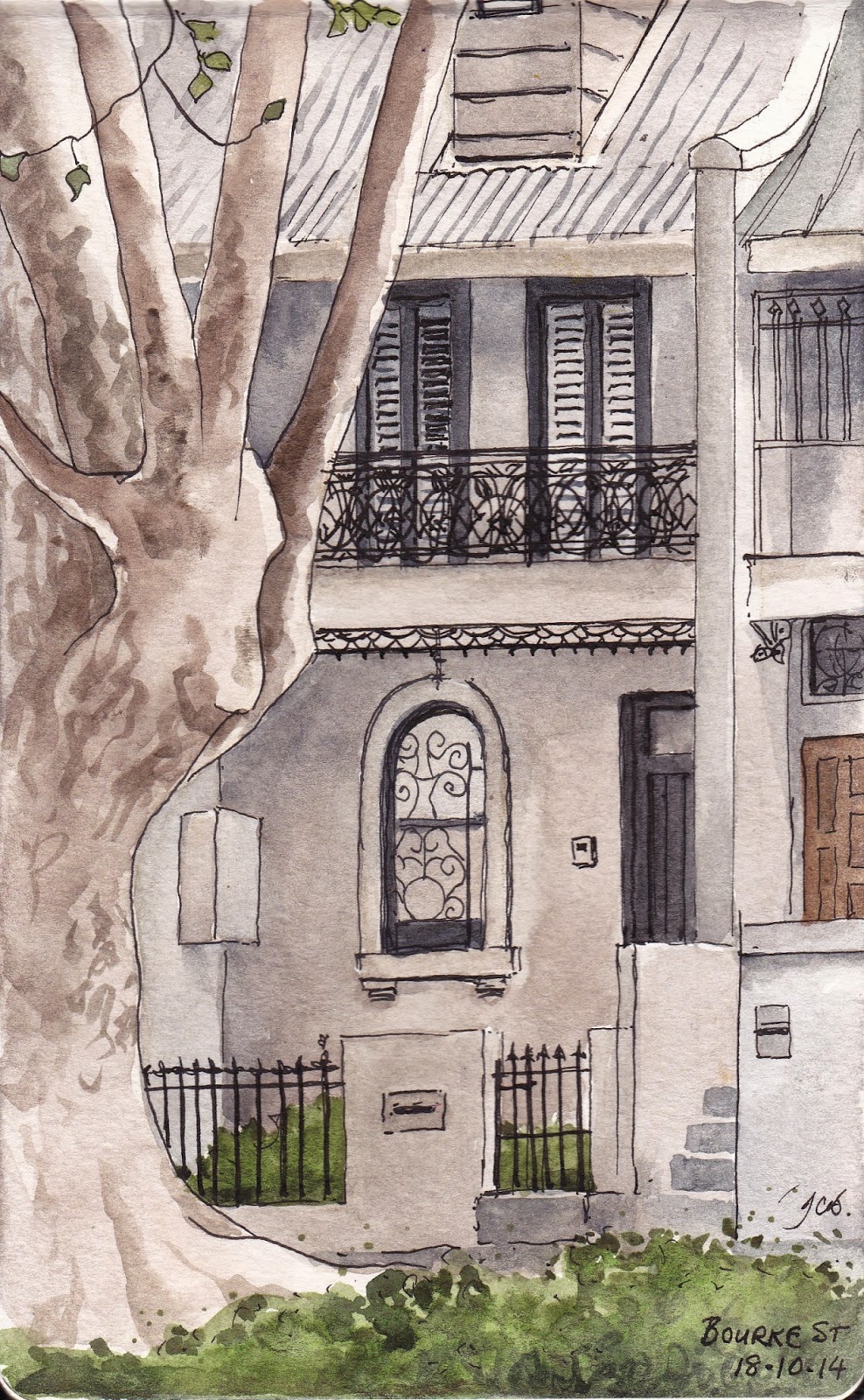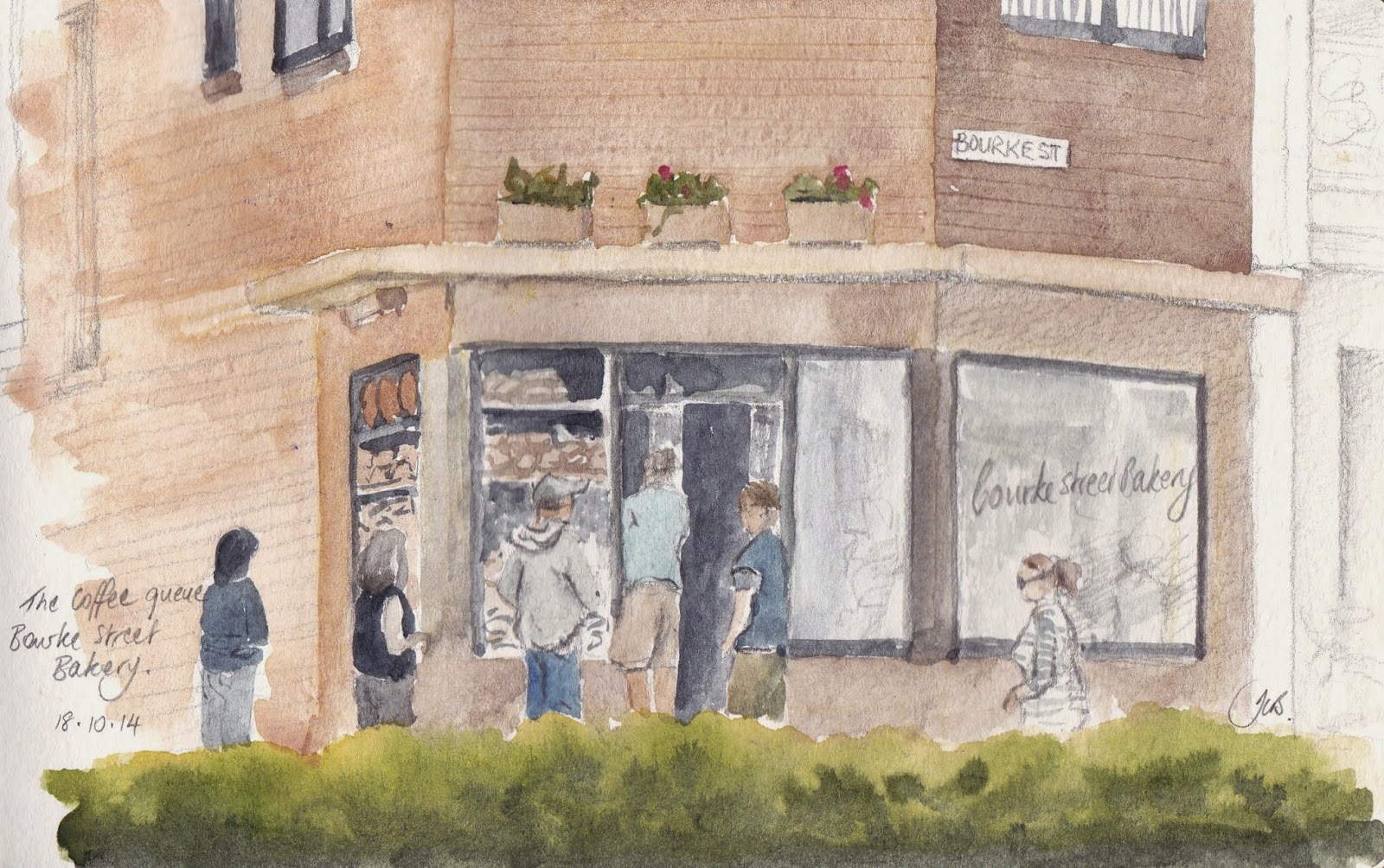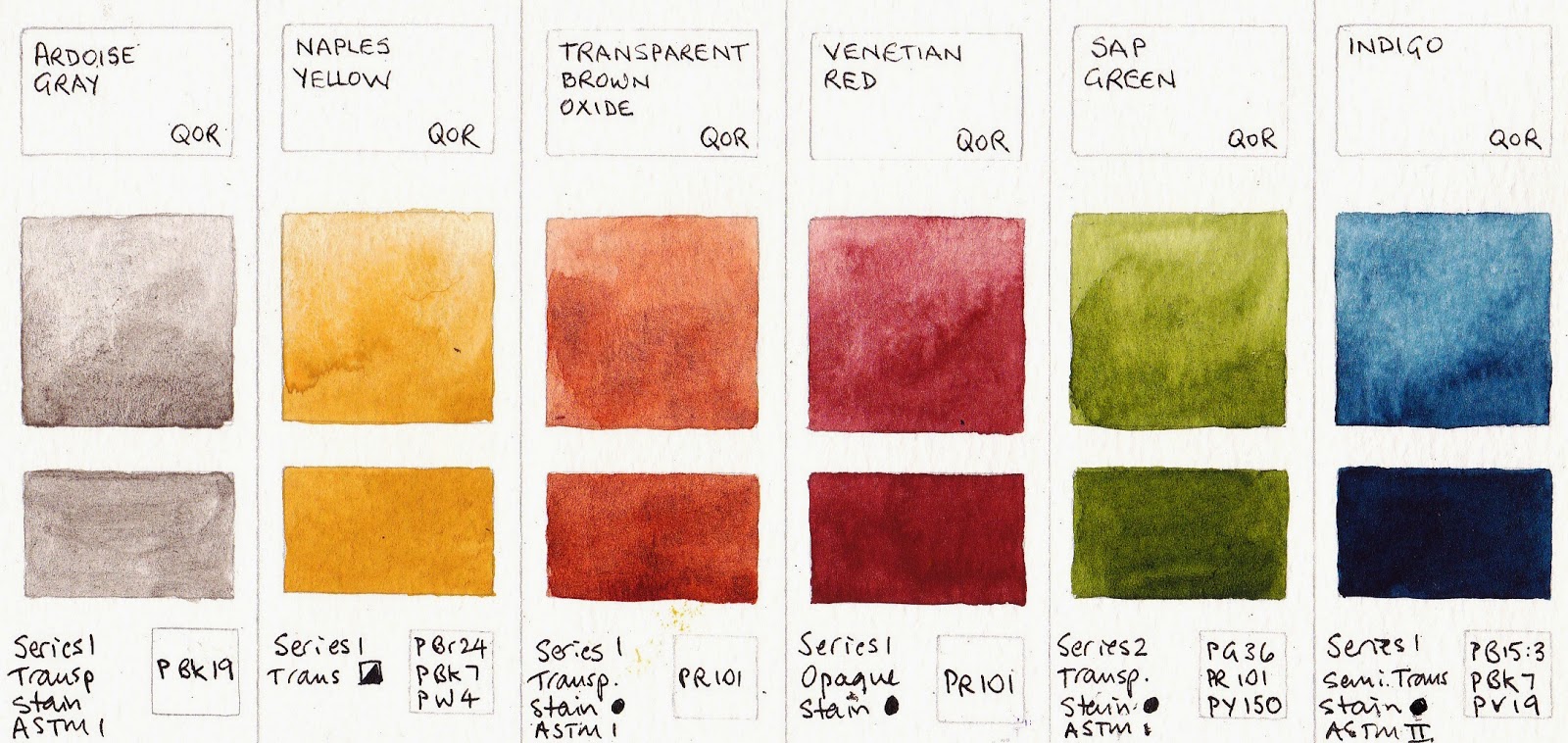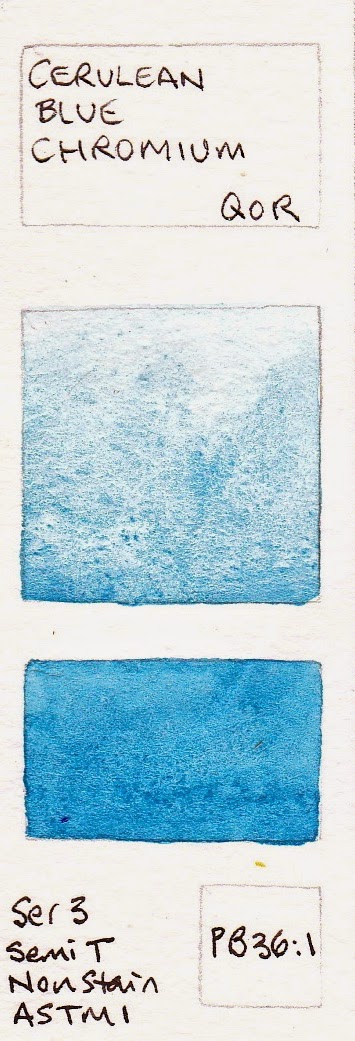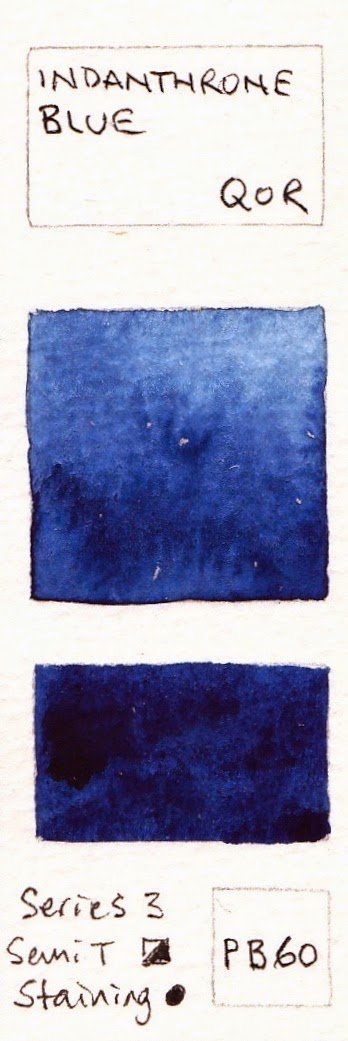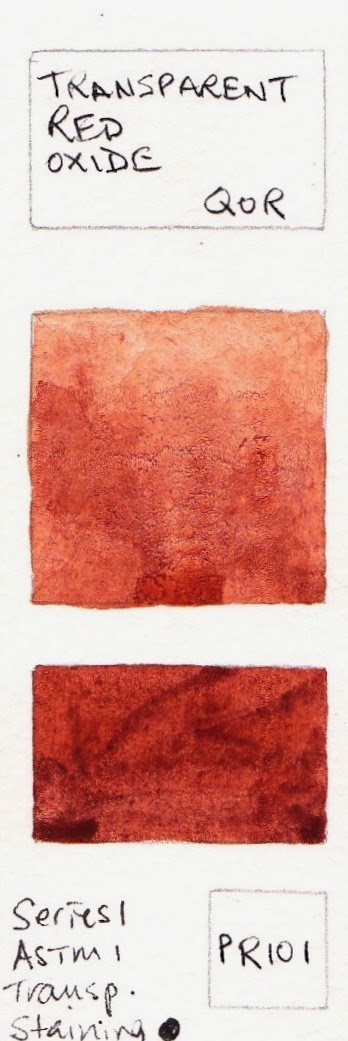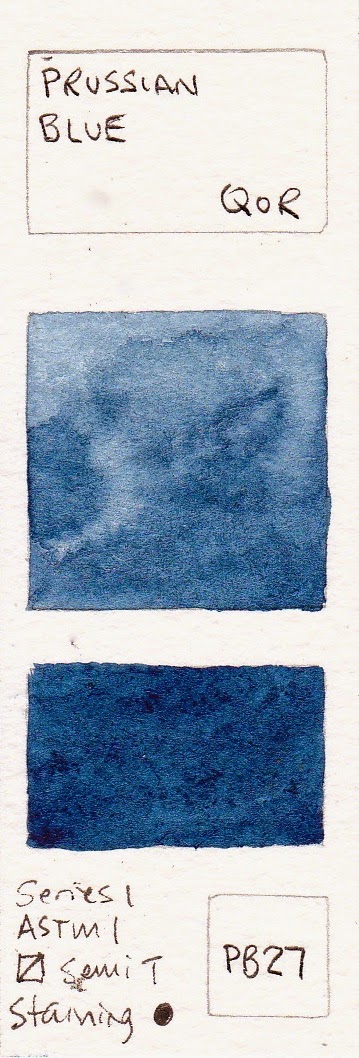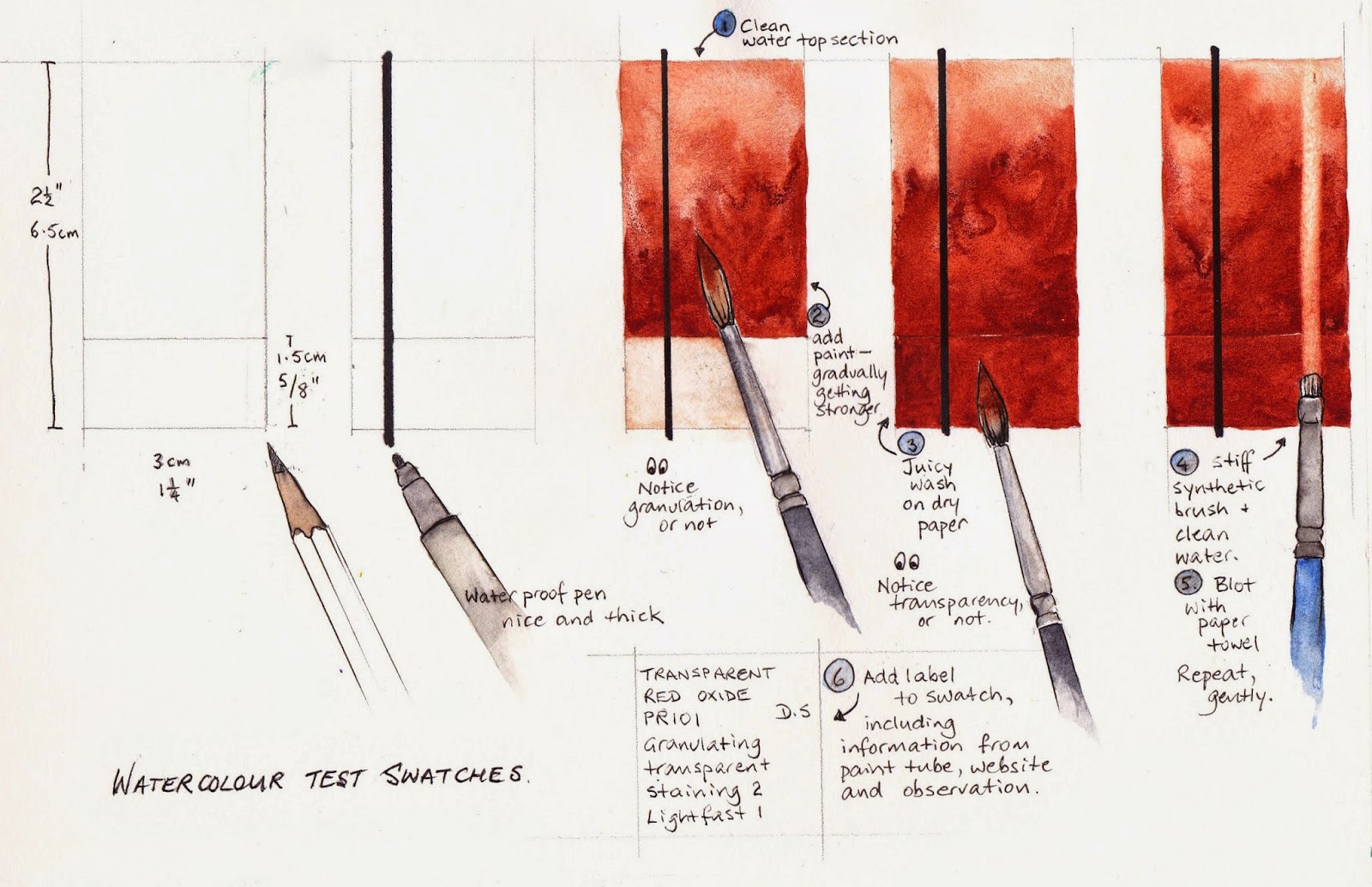 |
| Three QoR sample cards and some tubes to play with. |
I recently tried a number of samples of the new Golden watercolour range - QoR (pronounced 'core'). Golden has the reputation as one of the best acrylic paint makers in the world, though I haven't actually used them :-) The range of watercolours has a different binder from the usual Gum Arabic - Aquazol - and the aims of the company, according to the excellent website, was to create:
- Vibrant, intense colors that stay brilliant even after they dry
- Exceptionally smooth transitions, flow and liveliness on paper
- Excellent resolubility in water and glazing qualities
- Vivid depth of color with each brushstroke
- Greater resistance to cracking and flaking
- More density of color than traditional watercolors
- Exclusive Aquazol® binder used in conservation
(Copied from http://www.qorcolors.com/about-us)
Note - no mention of granulation - one of the characteristics I love to explore in watercolour.
The sample cards are beautifully presented on waterproof paper with a little sheet of watercolour paper so you can test the colour. I understand thousands of cards were made before they realised that the sample was too small to try properly. See right. The other cards had a bit more paint to be able to create a wash with (see below)
I painted out my usual swatches as best I could using every trace of the paint sample. The paints feel different to paint with. It was as though I were painting with alcohol rather than water though that doesn't really describe it properly - they had a different consistency from what I am used to, though some of the samples were not enough to create a 'juicy' wash. They seem very matt and flat with absolutely none of the slight sheen that the gum arabic creates in some watercolours. Some brands of course are too gummy!
They also didn't have the level of granulation I am used to, which would suit some people very well.
The Permanent Alizarin is made with PR177 - Anthraquinoid Red - which is a very powerful and staining crimson. The Ultramarine is rich and vibrant and there really is less of a drying shift than normal watercolours. I didn't document it with a before and after photo but it is interesting. Would that make it difficult to intermix them with other brands? Perhaps. I'd be reluctant. The Pyrrole Red Light behaved quite strangely as you can see above, but there wasn't much in the sample to explore this further. Note 2017 - the pigment is not PR255 which is a lovely warm red pigment.
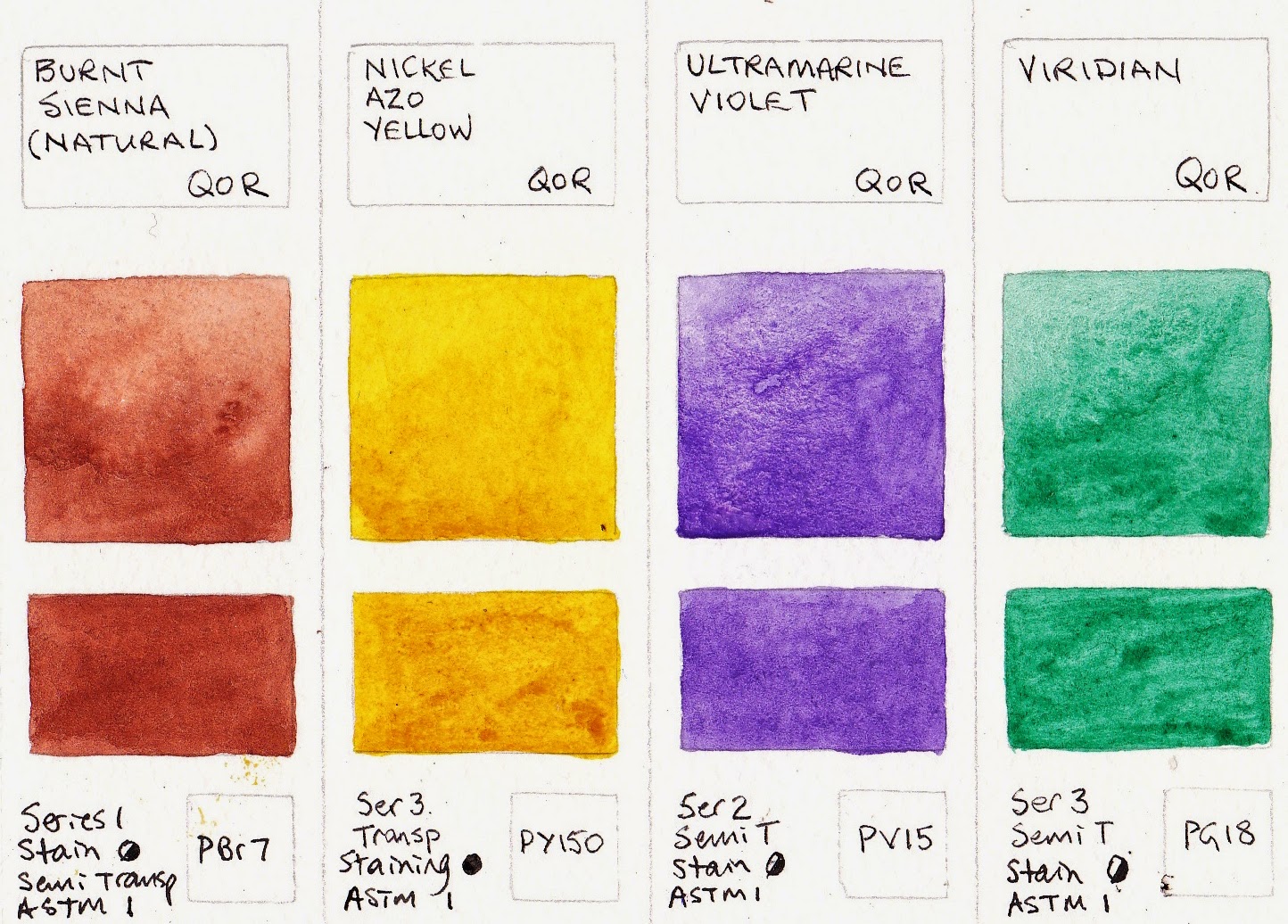
I was particularly interested in trying Ultramarine Violet and Viridian as these are generally not very strong colours that I had heard were very good in the QoR range. They do have a little more bang to them, though of course they are still gentle colours compared with their powerful dioxazine purple and phthalo green cousins - that's the nature of their pigments. Nickel Azo Yellow was very powerful. Burnt Sienna, though my preferred PBr7, was less so though hard to really tell from a small sample. It's a nice colour. I wasn't able to mix it with Ultramarine to see how it neutralised.

This bright set of swatches above were all rather lovely colours. Strong and clean and nearly all single pigment colours, except of course Quinacridone Gold, which is a nice hue made from PO48 + PY150. The orange is particularly beautiful.
This above set of swatches has a couple of three pigment mixes, which is too many for my liking. The Venetian Red is strong and opaque and very like Indian Red in other brands and the Transparent Brown Oxide is finely granulating. This could be a nice choice as a Burnt Sienna option if a more granulating version is desired. Sap Green is usually a mixture and this is a very usable version, even though it is a three pigment mix. They are very good pigments!
Note that the tubes are only 11ml and quite expensive compared with many brands.
I have made up a little palette of six to explore further. Somehow I think I will use them alone rather like coloured inks. My rather bright primary and secondary palette is Nickel Azo Yellow, the gorgeous Transparent Pyrrol Orange, Quinacridone Magenta, Ultramarine Violet, Ultramarine and Viridian. I'll see how they go to paint with...
The complete colour chart along with painted out samples and pigment information on all 83 colours can be found
here. I have added them to my other watercolour swatches on my website
here.
 |
| Brights sample card |
 |
| Earth sample card |
November update
I have also tried samples of a number of other colours so will add them to this Blog to keep them together. It isn't really necessary as there are painted samples on the QoR website that do show the colours very well, but I like to be thorough :-) I'll also add them to my website.
I had more paint to finish the Cerulean Blue sample, so have added that again here.
September 2017 update - I'll be painting out the rest of the range soon. Of note is Neutral Tint - it's a rare mixed grey without any black in it, made with PY42+PR122+Pb15:3 - I look forward to testing that one.












